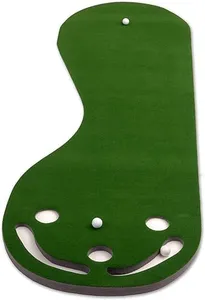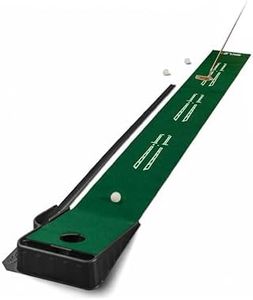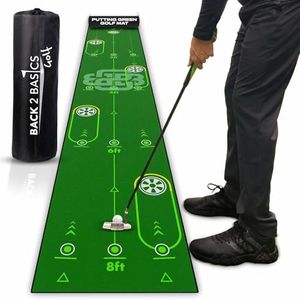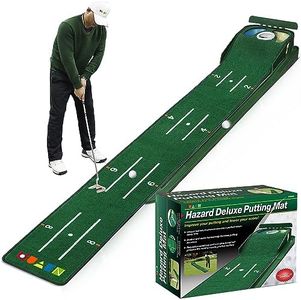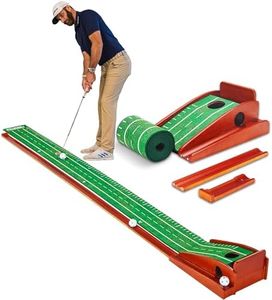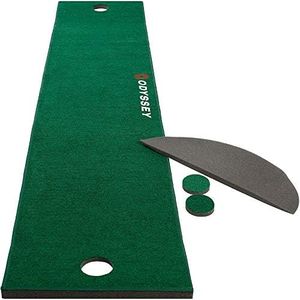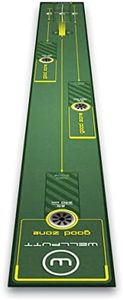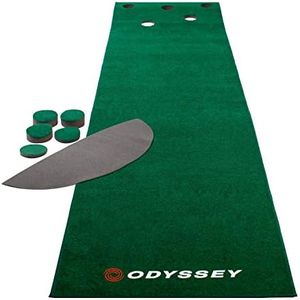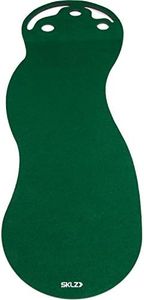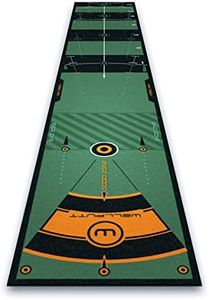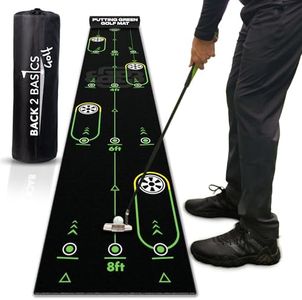We Use CookiesWe use cookies to enhance the security, performance,
functionality and for analytical and promotional activities. By continuing to browse this site you
are agreeing to our privacy policy
10 Best Indoor Putting Greens
From leading brands and best sellers available on the web.Buying Guide for the Best Indoor Putting Greens
Choosing the right indoor putting green can make practicing your golf skills at home both enjoyable and effective. Before making a choice, consider how much space you have, how realistic you want the surface to feel, and how often you'll be using it. Knowing what you want out of your practice will help you narrow down the options and select a green that fits your needs and environment best.Size and ShapeThe size and shape of an indoor putting green refer to its physical dimensions and overall layout. This spec is crucial because it determines how much space the green will occupy and what types of putts you can practice. Small putting greens (3-6 feet) are ideal for limited room and quick drills, while medium sizes (6-10 feet) offer a balance between challenge and convenience for most users. Large putting greens (over 10 feet) provide a more realistic and varied practice experience but require more dedicated space. Choose a size and shape based on the free area in your home and the types of putts you'd like to practice. If you have a specific spot in mind, measure it carefully before shopping.
Surface MaterialSurface material refers to the type of turf or carpet used on the putting green. This affects the feel and speed of your putts and how closely the indoor experience mimics a real golf course. Most greens use synthetic grass or specialized carpet. Basic mats are good for casual practice, while higher-end materials feel and perform more like real grass, offering consistent roll and speed. Consider your practice goals—if you want game-like realism, look for premium synthetic turf. If basic skill-building is your aim, a standard material will often suffice.
Stimp SpeedStimp speed measures how fast a golf ball rolls on the putting surface, similar to greens on a golf course. It's important because practicing on a speed that's too different from your usual course can make transitioning harder. Greens are roughly divided into slow (7-9), medium (9-11), and fast (11-13+). Slow speeds help beginners develop control, while faster greens challenge advanced players seeking to replicate tournament conditions. Think about the courses you play most often and try to match the Stimp speed of your indoor green for the best results.
Portability and StoragePortability and storage refer to how easily the putting green can be moved or packed away. Lightweight, roll-up mats are easy to store and set up, making them good for multi-purpose rooms or people who don’t want a permanent fixture. Heavier, rigid mats or framed greens may offer more stability and realism but are more cumbersome. If you need the flexibility to reclaim your space quickly, portability should be a top priority. If your space allows for a dedicated putting area, sturdier options might be preferable.
Additional FeaturesAdditional features can include built-in ball return systems, multiple hole placements, elevation changes, or markings for drills. These options can make practice more engaging and help you focus on specific skills. Simple surfaces are sufficient for casual practice, but extra features can add variety and help serious players improve faster. Consider what keeps you motivated and what skills you want to develop—features like alignment guides and different target holes can provide more structured practice if that suits your learning style.

